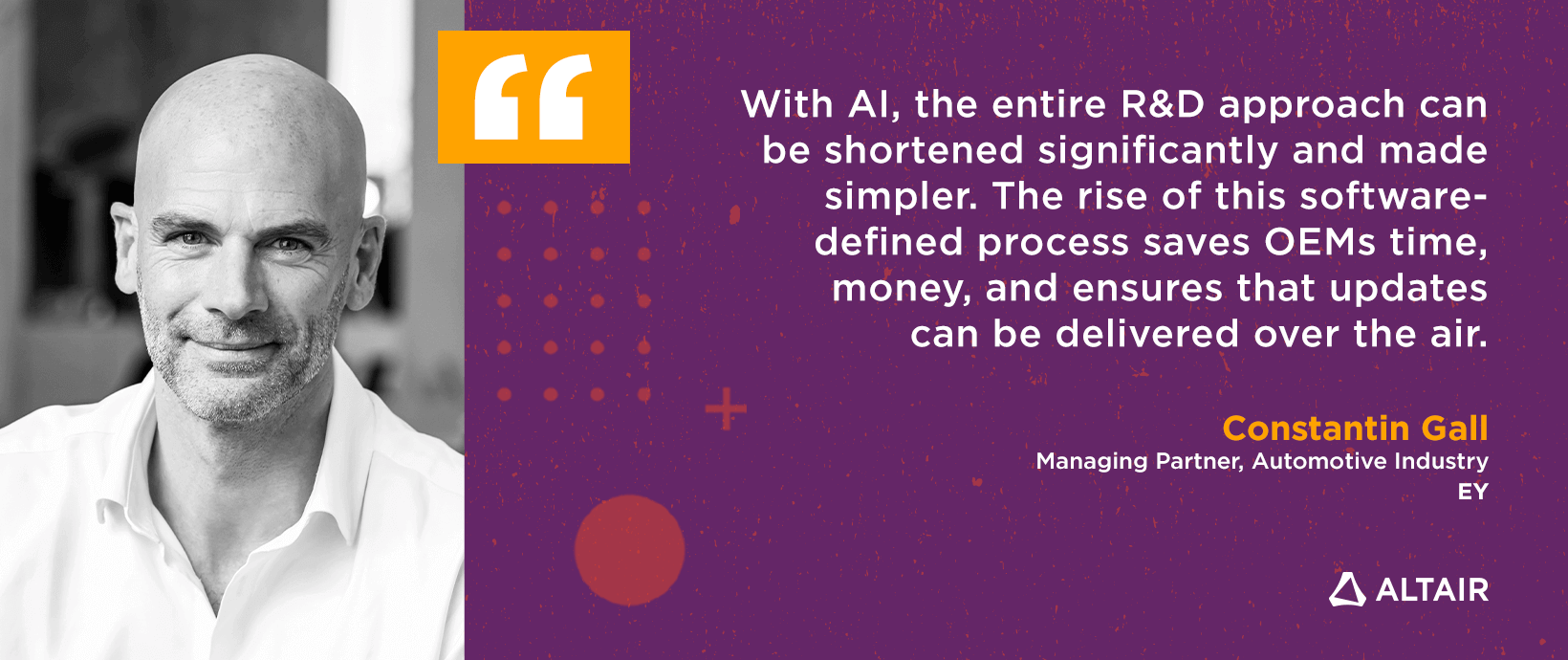3 IoT Trends Gaining Momentum in 2018
At Altair, we have seen an acceleration of IoT (Internet of Things) adoption across almost every industry. For this year, we expect these 3 major trends to gain momentum:
1. More IoT dedicated networks available and adopted:
In years past, we have seen some new technologies being developed and used to create a new type of network called Low-Power Wide Area Networks (LPWAN). These LPWAN networks are mainly IoT dedicated networks focusing on devices that send low amounts of data using a low amount of energy because they are run on batteries. These networks are a logical evolution of Wireless Sensor Networks (WSN), offering wider network coverage and the possibility to use them in two different ways; either you contract the network service from a telecom operator or, with certain technologies, you can deploy your own network infrastructure.
For example, in the past few years, the company Sigfox (www.sigfox.com) has gained a lot of momentum in network coverage, partners and customers. Sigfox is a pioneer company providing this IoT dedicated network directly as a service, either on their own or through selected partners in charge of deploying the network and selling the service.
Other alternative technologies are also gaining momentum. Among these technologies is LoRaWAN (https://en.wikipedia.org/wiki/LPWAN), based on the LoRa technology. LoRaWan has gained a lot of traction in recent years because it is offered either by operators as a service or offered to companies so they can create their own network deployment. This is possible because these technologies use ISM bands that don’t require a government authorization to be used.
Traditional Telecom Operators are also implementing new radio standards to use their licensed radio band to create dedicated IoT networks. There are two main technologies available right now, LTE-M and NB-IoT. Most telecom operators are deploying one of these technologies or in some cases, like Telecom Italia, deploying both. Although most of these deployments are still in the trial stage, 2018 is a crucial year for massive deployments and the first time they will gain large customers.
These new technologies can coexist very well since they offer different capabilities. LTE-M, for example, can provide a bandwidth of 150kbit/s with a latency of 10ms and only requires an upgrade on the existing 4G Antennas. On the other hand, NB IoT can provide 50 kbit/s with a latency of 10s. LTE-M can be used by connected cars while NB-IoT is more suited for battery powered sensors. As of today, 28 telecom operators have deployed these types of IoT dedicated LTE-M or NB-IoT networks.
2. Industrial IoT (IIOT) as the fastest growing segment: Out of POC and going into massive deployments:
IoT is a key component of the 4th industrial revolution. Many companies have been working with IoT technology in Proof of Concepts (POC) projects to enhance their manufacturing for example. Almost every POC provides an attractive ROI and therefore, manufacturing companies continue to roll out these POC among their factories, normally in multi-year plans to gain efficiency and improve quality.
Also over the past years, many large companies in the Industrial world have been expanding the product portfolio to include IoT solutions. Proof of this is the number of patents filled related to Industrial IoT. Just in 2016, the European Patent Office recorded more than 5,000 patents related to IoT. In Europe, over the last 3 years the growth rate has been 54%. This is a significant growth rate compared to the broad patent filling that increases at just 7.65% over the same span. There is still a lot of growth as the IIOT related patents only represent 3% of the total patents filled. It is also important to pay close attention to Korea and China because these two countries have the fastest growth in IIOT.
3. Implementation of Predictive Analytics and Machine Learning Algorithms:
These two technologies are used frequently in Industrial IoT applications such as Predictive Maintenance, Performance Optimization or Digital Twins of Assets.
This complex area of work requires combining Artificial Intelligence (AI) technologies with Analytics and IoT. For example, manufacturing companies are interested in transforming raw data from sensors into valuable data for Business Intelligence tools and if possible, into decision making software or even autonomous systems.
It is not an easy task. It requires a high degree of customization for each industry and/or company. It also requires that companies create multidisciplinary teams combining many areas of the company to work together on business processes and how they can be affected or improved with IoT data analysis. It is a key component in the digital transformation of industrial companies.
According to IDC, in 2018, the second investment area related to IoT software will be tools for Analytics and IA. They also expect a growth rate of 16.1% in the area until 2021.
Between dedicated IoT networks, the growth of IIoT, and implementing predictive analytics and machine learning, there are a lot of trends to watch out for this year. IoT is constantly growing and changing so it is important to keep watching it and stay up to date on what may lie ahead.
1. More IoT dedicated networks available and adopted:
In years past, we have seen some new technologies being developed and used to create a new type of network called Low-Power Wide Area Networks (LPWAN). These LPWAN networks are mainly IoT dedicated networks focusing on devices that send low amounts of data using a low amount of energy because they are run on batteries. These networks are a logical evolution of Wireless Sensor Networks (WSN), offering wider network coverage and the possibility to use them in two different ways; either you contract the network service from a telecom operator or, with certain technologies, you can deploy your own network infrastructure.
For example, in the past few years, the company Sigfox (www.sigfox.com) has gained a lot of momentum in network coverage, partners and customers. Sigfox is a pioneer company providing this IoT dedicated network directly as a service, either on their own or through selected partners in charge of deploying the network and selling the service.
Other alternative technologies are also gaining momentum. Among these technologies is LoRaWAN (https://en.wikipedia.org/wiki/LPWAN), based on the LoRa technology. LoRaWan has gained a lot of traction in recent years because it is offered either by operators as a service or offered to companies so they can create their own network deployment. This is possible because these technologies use ISM bands that don’t require a government authorization to be used.
Traditional Telecom Operators are also implementing new radio standards to use their licensed radio band to create dedicated IoT networks. There are two main technologies available right now, LTE-M and NB-IoT. Most telecom operators are deploying one of these technologies or in some cases, like Telecom Italia, deploying both. Although most of these deployments are still in the trial stage, 2018 is a crucial year for massive deployments and the first time they will gain large customers.
These new technologies can coexist very well since they offer different capabilities. LTE-M, for example, can provide a bandwidth of 150kbit/s with a latency of 10ms and only requires an upgrade on the existing 4G Antennas. On the other hand, NB IoT can provide 50 kbit/s with a latency of 10s. LTE-M can be used by connected cars while NB-IoT is more suited for battery powered sensors. As of today, 28 telecom operators have deployed these types of IoT dedicated LTE-M or NB-IoT networks.
2. Industrial IoT (IIOT) as the fastest growing segment: Out of POC and going into massive deployments:
IoT is a key component of the 4th industrial revolution. Many companies have been working with IoT technology in Proof of Concepts (POC) projects to enhance their manufacturing for example. Almost every POC provides an attractive ROI and therefore, manufacturing companies continue to roll out these POC among their factories, normally in multi-year plans to gain efficiency and improve quality.
Also over the past years, many large companies in the Industrial world have been expanding the product portfolio to include IoT solutions. Proof of this is the number of patents filled related to Industrial IoT. Just in 2016, the European Patent Office recorded more than 5,000 patents related to IoT. In Europe, over the last 3 years the growth rate has been 54%. This is a significant growth rate compared to the broad patent filling that increases at just 7.65% over the same span. There is still a lot of growth as the IIOT related patents only represent 3% of the total patents filled. It is also important to pay close attention to Korea and China because these two countries have the fastest growth in IIOT.
3. Implementation of Predictive Analytics and Machine Learning Algorithms:
These two technologies are used frequently in Industrial IoT applications such as Predictive Maintenance, Performance Optimization or Digital Twins of Assets.
This complex area of work requires combining Artificial Intelligence (AI) technologies with Analytics and IoT. For example, manufacturing companies are interested in transforming raw data from sensors into valuable data for Business Intelligence tools and if possible, into decision making software or even autonomous systems.
It is not an easy task. It requires a high degree of customization for each industry and/or company. It also requires that companies create multidisciplinary teams combining many areas of the company to work together on business processes and how they can be affected or improved with IoT data analysis. It is a key component in the digital transformation of industrial companies.
According to IDC, in 2018, the second investment area related to IoT software will be tools for Analytics and IA. They also expect a growth rate of 16.1% in the area until 2021.
Between dedicated IoT networks, the growth of IIoT, and implementing predictive analytics and machine learning, there are a lot of trends to watch out for this year. IoT is constantly growing and changing so it is important to keep watching it and stay up to date on what may lie ahead.




